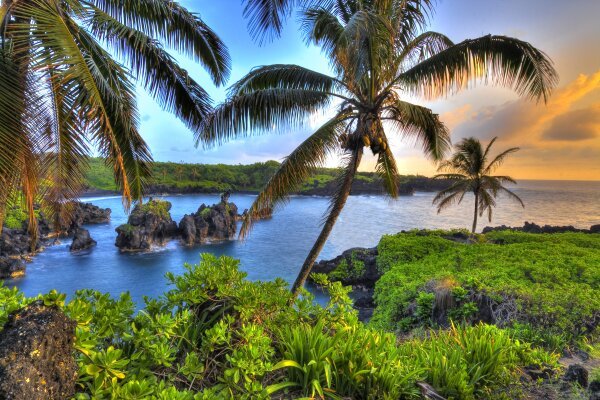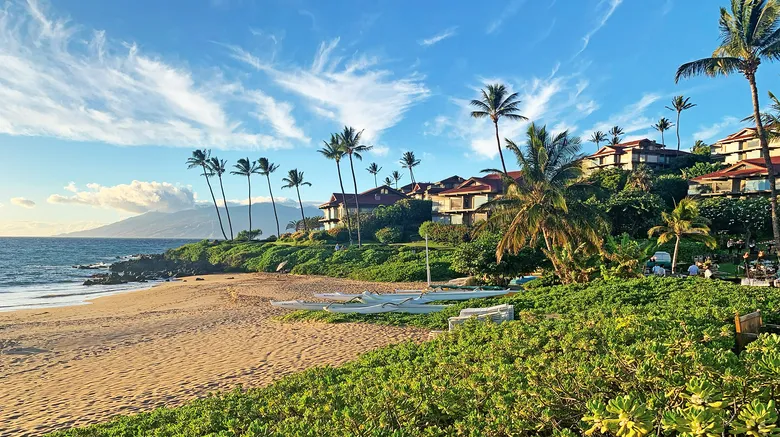Hey guys, as a Maui blogger and website owner I am gonna tell you in this article how MAUI is big. So, let’s explore the article and read about Maui.
Well, Maui, the second-largest of the Hawaiian Islands, and known for its amazing beauty, landscapes, and insane beaches. People wanna go to maui because of its breathtaking landscapes and captivating nature.
A Glimpse into Maui’s Age
| Geological Era | Time Period (Million Years Ago) | Significant Events in Maui’s Formation |
| Miocene | 23-5 | East Maui Volcano begins to form. |
| Pliocene | 5-2.6 | West Maui Volcano forms. |
| Pleistocene | 2.6-0.0117 | Iao Valley is carved by erosion. |
| Holocene | 0.0117-Present | Volcanic activity ceases, and Maui takes its current shape. |
Now let’s see the size of Maui
- Land Area: 727.2 square miles (1,883 square kilometers)
- Length: 48 miles (77 kilometers)
- Width: 26 miles (42 kilometers)

The Land Area of Maui: An Increasing Scope
Maui’s size is mostly due to its large land area. Maui, after Hawaii, commonly referred to as the Big Island, is the second biggest island in the Hawaiian islands covering an area of 727.2 square miles (1,883 square kilometers). This vast region offers a wide range of landscapes, from green rainforests and majestic waterfalls to parched deserts and savage volcanic areas.
The Coast: Reaching out to the Pacific
With a staggering 120 miles (193 kilometers) of shoreline, one of Maui’s most attractive attributes is its length. Some of the most beautiful beaches on Earth may be found along this meandering coastline, including the well-known Kaanapali Beach, the round Kapalua Bay, and the quiet Hamoa Beach. There are countless options for exploration and enjoyment along Maui’s shoreline, regardless of your preference for adventure or peace.
The House of the Sun, Haleakala, is the highest peak.
At 10,023 feet (3,055 meters) above sea level, the dormant volcano crater known as Haleakala towers majestically over the landscape of Maui. This massive peak, known as the “house of the sun” in Hawaiian, is a well-liked spot for trekking, stargazing, and hiking up to see the breathtaking sunrise.
Maui Area Information
| Category | Value |
| Land Area | 727.2 square miles (1,883 square kilometers) |
| Coastline Length | 120 miles (193 kilometers) |
| Highest Elevation | Haleakala: 10,023 feet (3,055 meters) |
| Largest Town | Kahului (Population: ~28,000) |
| Distance from Other Islands | Molokai: 25 miles (40 km), Lanai: 8 miles (13 km), Oahu: 72 miles (116 km) |
7 Facts about Maui’s Bigness:
1. Geography and Location
Maui, also known as “The Valley Isle,” is situated in the central Pacific Ocean. Its coordinates are approximately 20.800°N latitude and 156.300°W longitude. The island’s unique shape is defined by two prominent volcanic features: Haleakalā in the southeast and the West Maui Mountains in the northwest. These two volcanic masses are connected by a narrow isthmus, giving Maui its distinctive nickname.

2. Maui’s Area and Ranking
- Area: Maui covers approximately 727.2 square miles (1,883 km²), making it the second-largest island in Hawaii.
- Ranking: Nationally, Maui ranks as the 17th-largest island in the United States.

3. Volcanic Origins
- Haleakalā: The southeastern part of Maui is dominated by Haleakalā, a dormant shield volcano. Its highest point reaches an impressive 10,023 feet (3,055 meters) above sea level.
- West Maui Mountains: In the northwest, the West Maui Mountains form another volcanic mass. These lush mountains contribute to Maui’s diverse landscapes.

4. Population and Demographics
- As of 2021, Maui’s population stands at 164,221, making it the third-most populous Hawaiian Island after Oʻahu and Hawaiʻi Island.
- The largest census-designated place (CDP) on Maui is Kahului, serving as the island’s commercial and financial hub.

5. Key Settlements
- Kahului: The largest CDP, home to 28,219 residents.
- Wailuku: The seat of Maui County and the third-largest CDP.
- Kīhei: Including Wailea and Makena, Kīhei is the second-most-populated CDP.
- Lāhainā: Known for Kāʻanapali and Kapalua, Lāhainā offers stunning coastal views.

6. Tourism and Economy
- Maui thrives on tourism, attracting nearly three million visitors in 2022.
- Popular destinations include Kāʻanapali and Wailea resorts, the scenic Hāna Highway, Iao Valley, and Haleakalā National Park.

7. Etymology: The Legend of Māui
- According to Native Hawaiian tradition, the island’s name traces back to Hawaiʻiloa, the legendary navigator. Hawaiʻiloa named the island after his son, who was in turn named after the demigod Māui.
- Maui’s previous name was ʻIhikapalaumaewa.

(FAQs) about Maui’s Size
Q: How big is Maui compared to other Hawaiian Islands?
A: Maui is the second-largest, following the Big Island of Hawaii.
Q: Can I drive around Maui in a day?
A: Technically yes, but it wouldn’t be ideal. Maui offers diverse landscapes, and rushing through would mean missing hidden gems.
Q: Is it easy to get around Maui on public transportation?
A: Public transportation is limited in Maui. Renting a car allows for exploring at your own pace.
Q: Is Maui too big for hiking?
A: Not! Maui offers a variety of hikes, from short nature walks to challenging treks.
Conclusion
So, people, this is the article with all the details and info about Maui’s Age and size. Read it carefully and leave a comment also how is it. And enjoy the beauty of Maui the captivating Island in 2024.
Hey, Rahul Sharma here. So basically I am a Maui Fire and Maui info blogger.
Trying to give almost accurate data about Maui Fire and some Maui destinations. Do this since 1 year and happy to give real information about Maui, Thanks.


